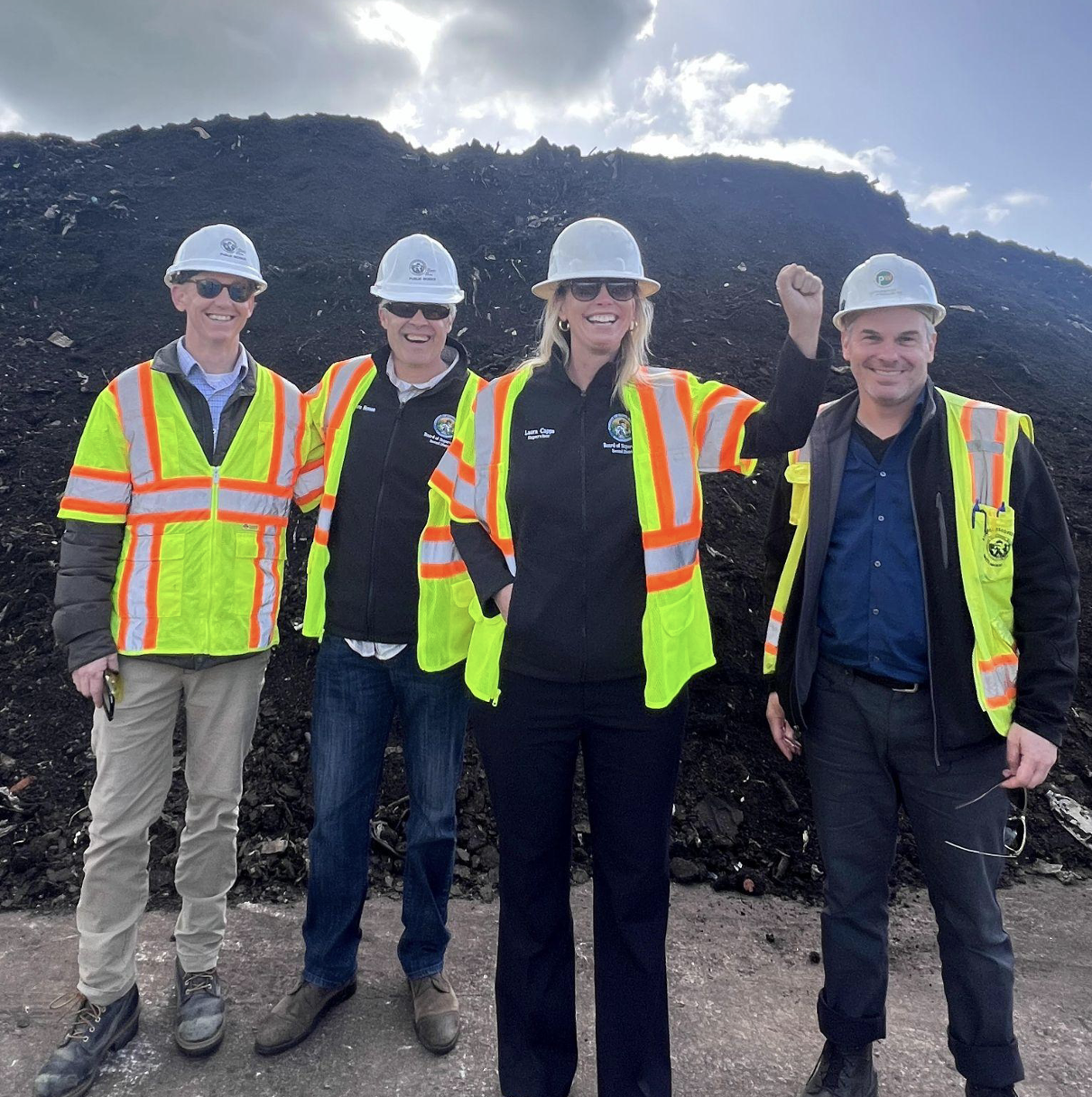Getting to the Bottom of Our Trash
We Each Produce Six Pounds a Day

In our fast-paced world, much of what we consume is just a click away. The habit of buying and using more than we need — whether food, fast fashion, or single-use plastics — adds up quickly. The startling reality is that those of us in Santa Barbara County are generating more trash than ever, averaging six pounds per person each day. Over the past decade, California’s waste generation has more than doubled.
On a positive note, Santa Barbara County is outperforming the state and the nation in keeping waste out of landfills. Our waste management team has received awards for innovative approaches, and there are numerous recycling and hazardous waste collection programs for electronics, batteries, used oil, mattresses, and more. However, despite these efforts, our consumption and waste rates continue to rise. Last week, the Board of Supervisors dug in on our trash to explore ways to improve.

Convenience drives our choices: A recent public survey revealed that convenience is the primary factor influencing our disposal decisions. For instance, textiles-clothes and other materials- account for 12 percent of landfill waste, while 40 percent of food purchased in the U.S. is never eaten.
I commend the many local organizations that make smarter choices more convenient, driven by the vision of a zero-waste society. The Community Environmental Council (CEC) and Gaviota Coast Conservancy advocate for better composting and food waste reduction. SB County Food Rescue fosters partnerships between donors with surplus food and charitable organizations, tackling food insecurity while diverting good food from landfills. They report that last year alone this innovative work resulted in the recovery of 955,265 pounds of high-quality food.

We can all make smarter choices to consume less, shop locally, recycle, compost and drop off donations at organizations like Goodwill or Catholic Charities for reuse. During my morning dog walk last week, I encountered a clear example of our waste problem.
Leading by Example: As one of our top local employers, with approximately 4,000 people working for the county, we produce a significant amount of trash. I’m advocating for the county to lead by example and reduce its waste. What single-use items are we purchasing? How can we make smarter decisions to reduce our footprint? While some county departments have excelled in achieving Green Business certification, I believe all of them should strive for the same.
Here are two other potential county initiatives I’m excited about:
- A textile recovery program would allow people to drop off used textiles that can’t be used again. Since 2020, the City of Los Angeles has recycled more than 1,000 pounds of cotton waste into new cotton shirts that will be released by the local legend Kelly Slater’s brand Outerknown.
- The plastic film that protects your dry cleaning or wraps around everyday products like paper towels can take hundreds of years to decompose, contributing to long-term pollution in landfills, the environment and is particularly harmful to marine life. With CEC’s support, Ablitt’s in Santa Barbara has taken the lead to tackle this problem. Santa Barbara County is also exploring a film plastic recycling initiative, including potential partnerships with local companies. Film plastic makes up 14 percent of our landfill.
Up Your Trash Game: Take a look at the county’s waste recovery webpage, LessIsMore.org. It’s a one-stop shop for all of the available community resources to reduce, practice better waste disposal, and other information to equip you to do everything we can to make our community’s waste footprint as small as possible. The Community Environmental Council also provides a range of resources, such as helping your organization or business install refillable hydration stations.
The county has made important strides to responsibly reduce the impact of our trash. The bottom line is that we know we can do more — and you can too. Reducing waste is not just about what we throw away; it’s about the small but mighty choices we make all throughout each day that impact our planet’s future.

You must be logged in to post a comment.